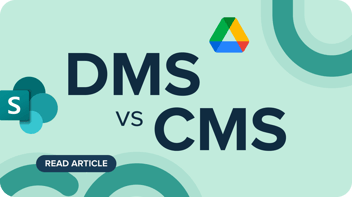5 easy steps to getting contracts signed at the speed of light
When a contract enters the organisation, you want to be sure of two things. On the one hand, the contract needs to be approved and signed by the right people. On the other hand, you want this process to run smoothly. Today we will take a closer look at how to set up a high-performance approval flow that gets your contracts signed quickly, safely and efficiently.

5 easy steps to getting contracts signed at the speed of light:
Step 1: start with the quick wins
Step 2: determine who is authorised to sign
Step 3: define the general guidelines you want to apply
Step 4: choose the right technological support
Step 5: make the approval procedures an efficient habit-
Step 1: start with the quick wins.
As with many things, the golden rule is: keep it simple. Look for the so-called pain points of contracts in your organisation. These are the places where most contracts circulate and where there is most confusion about who is allowed to sign them. These could be sales contracts, financial matters, collaborations with consultants, etc. Whatever it is, start there.
-
Step 2: determine who is authorised to sign.
Clearly define a fixed person (for example per department, supplier, etc.) who is authorised to sign contracts. This way you always have one point of contact if something is not clear. This person will also check the preceding process. If you are sure that the right person will sign the contract, they can also be the ones to check whether the necessary controls have been carried out. Are you looking for a handy checklist to find out who you need to involve in your approval process? Download the complete contract approval flow guide from this page and get started right away.
-
Step 3: define the general guidelines you want to apply.
In this step, you link the people with authority to sign to specific contracts. Some examples are:
- Up to 20K, the business unit manager may decide or sign, whereas
- Contracts that commit us for longer than 1 year must be passed on to the CEO.
- From 100K onwards, our legal department should look at the contract.
Try to limit the guidelines at this stage to a maximum of 5-10 lines.
-
Step 4: choose the right technological support.
In the beginning, it is not wrong to write out your process in a document and still rely entirely on mail. Unfortunately, due to the lack of overview, this method is difficult to scale. If you want an approval procedure that is clear and followed by everyone, it is best to use a supporting software. Contract management software is perfect for this because it centralises all contracts, delegates the associated tasks and automates the follow-up.
-
Step 5: make the approval procedures an efficient habit.
Make sure from the start that the approval procedures are carried out consistently and make adjustments where necessary. Once the organisation has become accustomed to running a certain type of contract through the defined approval flow, it is easy to extend this flow to other types of contracts.
Can't see the forest for the trees anymore? Feel free to rely on our contract expertise. In a personal demo we discuss how you can get a grip on your contracts and related approval processes in the short term. Book your demo today or contact us for more information.
 Want to know more about approval flows?
Want to know more about approval flows?
Download the full guide.



